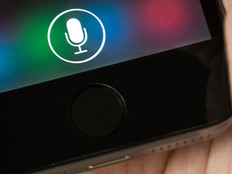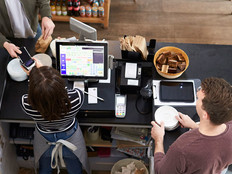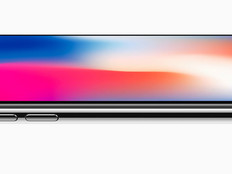NFL Tablets 2.0: Football Teams Tackle Mobile Upgrades
Apple iPad devices revolutionized NFL playbooks several years ago, and as those early tablets reach their end of life, teams such as the Arizona Cardinals are shopping for their next-generation tablets.
NFL teams that were early adopters replaced their traditional paper playbooks with electronic ones on tablets during the 2011 and 2012 seasons, and now, most franchises equip their coaches and players with the devices. The tablets are more lightweight and provide players with everything they need to prepare for games — the playbook, game film and the ability to make notations for coaches and other players — all at their fingertips.
But as their original devices get to be three or more years old, NFL organizations are upgrading to newer models that are lighter, faster and more powerful. They have plenty of new tablets to choose from, including the high-end iPad Pro or the hybrid Microsoft Surface Pro 4 tablet-notebook. With bigger, higher-resolution screens, players and coaches can view video footage of games and practices in greater detail.
The Cardinals, for one, purchased fourth-generation iPads in 2013 and now plan to replace the nearly three-year-old devices in time for the 2016 season.
“Next year, we will make a decision on what we want to do, whether we will continue to use the iPad or use the Surface Pro,” says Mark Feller, the Cardinals’ vice president of IT. “We have a lot of good options, which is terrific. It will come down to what’s most efficient and what our coaches prefer.”
The Tablet Lessons the NFL Has Learned
The Indianapolis Colts are already enjoying the benefits of new tablets. The team, which initially purchased 120 third-generation, 64-gigabyte iPads in early 2012, upgraded to the latest iPad Air 2 devices before the start of the 2014 season.
In doing so, they doubled the storage to 128 gigabytes, so players and coaches could store more video.
“The extra storage was important,” says Ryan Fannin, director of football information systems for the Colts. “We have some players that really consume video, and we didn't want the device to be a limiter in their preparation.”
Although the iPad Air 2 has the same screen size as the Colts’ previous device (9.7 inches), it has a faster processor and is almost a half pound lighter (0.98 pounds, instead of 1.44 pounds).
The biggest change is that Fannin upgraded from a Wi-Fi-only device to a tablet that supports both Wi-Fi and cellular connections.
Players are not always near a Wi-Fi hotspot, so the cellular connection allows them to download updates to the playbook and new video footage immediately, no matter where they are, he explains.
“When we go on a road trip, there are times when we are out of Wi-Fi range, or sometimes hotels have outrageous rates for Wi-Fi, so with cellular capability, coaches can make a last-minute change to the playbook or game plan and push that to players right away,” Fannin says.
The cellular connection also improves security. If players or coaches lose an iPad, Fannin can use the team’s AirWatch mobile device management software to remotely connect to the device and erase its contents.
“If a Wi-Fi-only iPad is lost and someone takes it out of Wi-Fi range, we would not be able to secure the device,” he says.
What’s Next with Tablets?
The Arizona Cardinals equip players with a 64-gigabyte Wi-Fi-only iPad, but the team provides coaches with two devices: an iPad and a Lenovo ThinkPad W Series notebook computer, which serves as a desktop replacement.
Coaches use the notebook with dual monitors at their desks. One monitor is to review video of their team or upcoming opponents, Feller explains, and the other monitor is for the playbook app, so they can build that week’s game plan.
Typically, the coaches bring either their ThinkPad or iPad home with them or on road trips – but not both devices because that would be redundant.
“It’s their choice. We want them to have the option of taking whichever product they want,” Feller says. “The iPad is smaller, lighter and easier to use, but it only does a subset of what a full laptop can do, so it depends on what their needs are.”
The iPad devices, which have 9.7-inch screens, are three years old, so it will be time to upgrade the tablets before next season. Feller says he’s open to all options.
The Cardinals will soon test the newly released iPad Pro, which has a 12.9-inch screen, a 2732x2048 screen resolution and nearly double the processing power of the iPad Air 2. “The iPad Pro’s larger screen size may be a really useful tool,” he notes.
The team already outfitted its 15 scouts with the Surface Pro 3 earlier this year. According to Feller, the Surface Pro 3, which has a 12-inch high-resolution screen, is a possibility for players and coaches because they are already familiar with it, using the device during games to view color photos of each play.
What’s more, both Microsoft’s new Surface Pro 4 and Surface Book, which is a notebook computer with a snap-off screen that can be used as a tablet, are single devices that could potentially replace the coaches’ current Lenovo notebook and iPad.
The IT staff, video staff and coaches will pilot all the devices and come to a decision before next season, Feller says.
“After the season, once we start working with the coaches and do some testing and get feedback, then we will come up with an answer of what direction we want to go,” he says.









